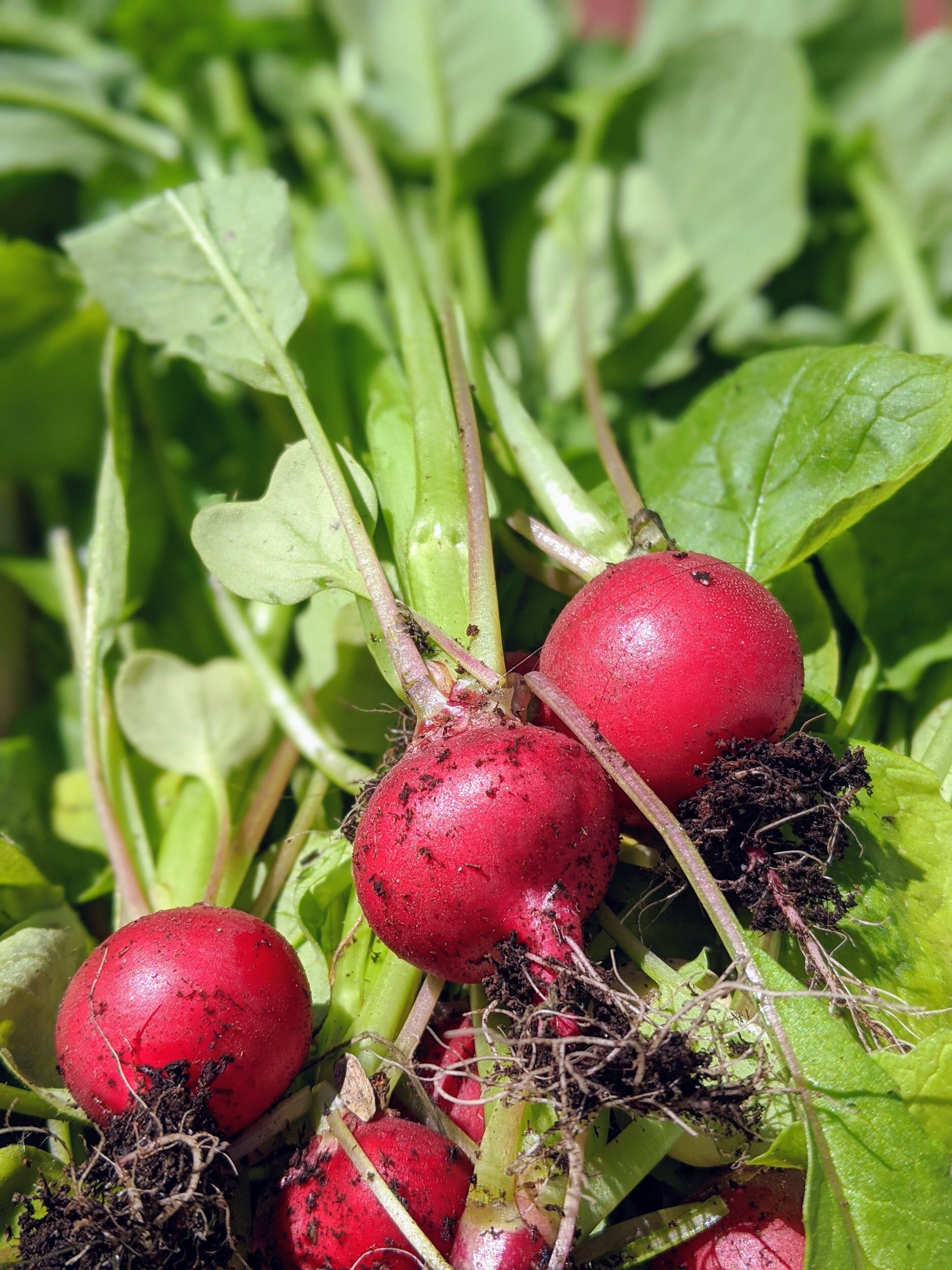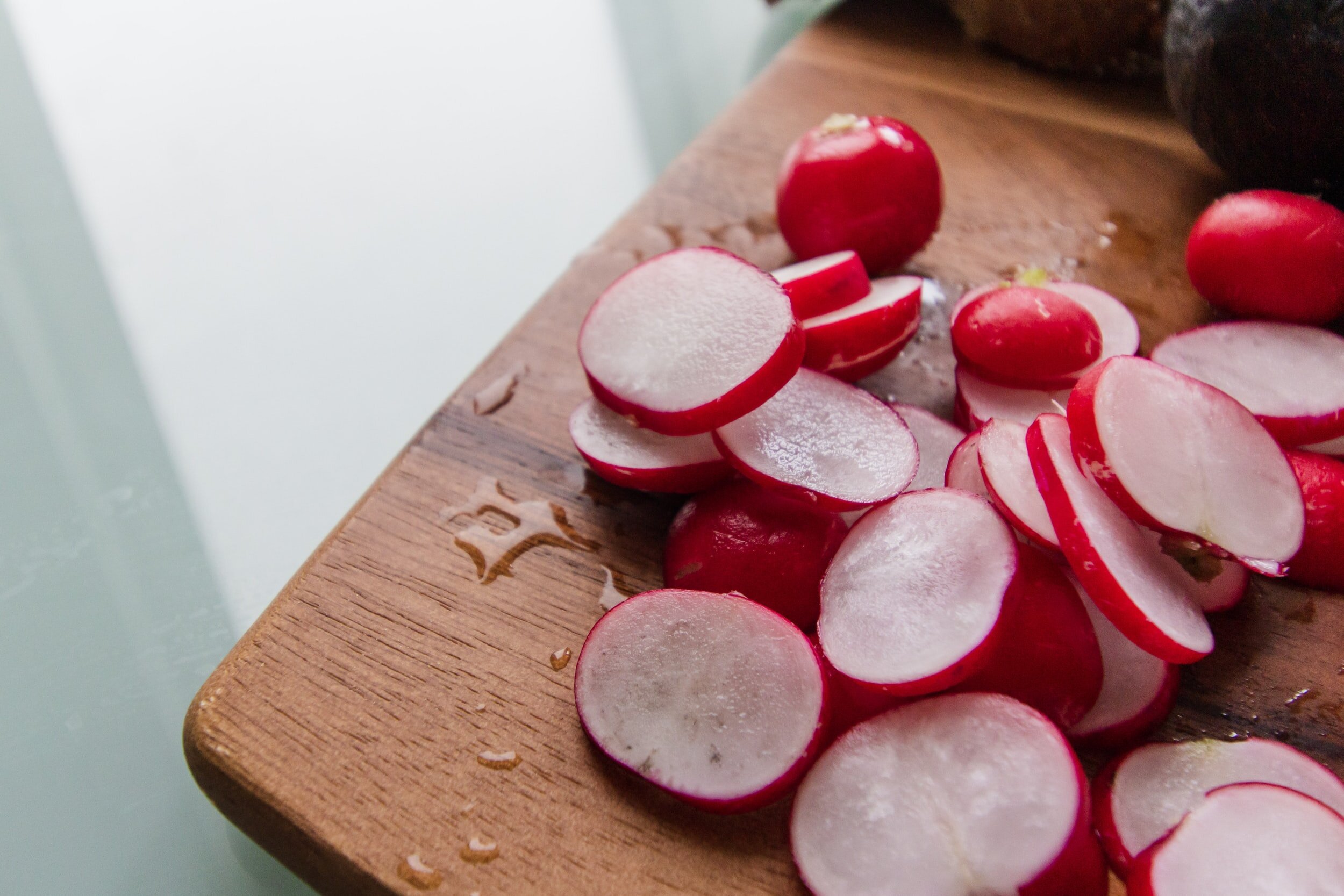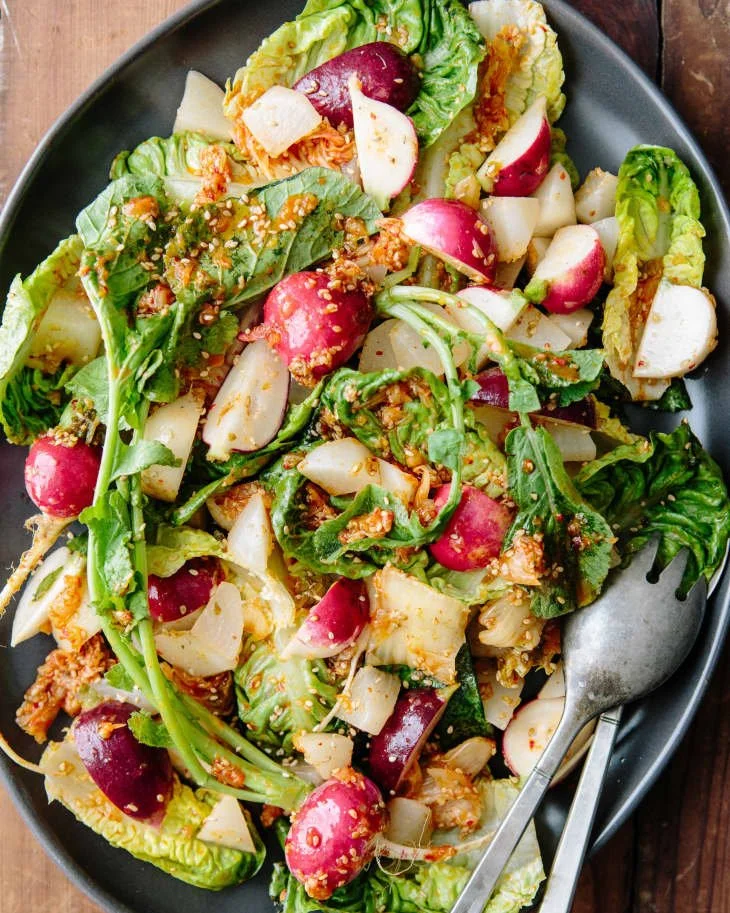Energetics of Radish: Radical Groundlings
Radishes are grown and consumed all around the world with the first written records being found from the 3rd century B.C. They are generally eaten raw as a crunchy salad vegetable. Surprisingly, there are numerous varieties of radishes, varying in size, flavor, color, and length of time they take to mature. Radishes can be sweet or spicy, owing to their sharp flavor to the various chemical compounds produced by the plants, including glucosinolate, myrosinase, and isothiocyanate.
About seven million tons of radishes are produced yearly, which is roughly 2% of the global vegetable production.
Varieties
Radishes come in groupings categorized by the season they are grown in.
Summer Radishes are sometimes referred to as European radishes or spring radishes if they are planted in cooler weather. Summer radishes tend to be smaller and have a relatively short cultivation time. There are many different summer radishes, almost too many to name. Cherry Belle is the one that is commonly found in grocery stores, it is bright red-skinned with a white interior. Snow Belle is very similar to the Cherry Belle, but it is all white. Gala and Roodbol are two varieties popular in the Netherlands in a breakfast dish, thinly sliced on buttered bread. Champion is round and red-skinned like the Cherry Belle, but with slightly larger roots, up to about 2 in, and has a milder flavor. Easter Egg is not an actual variety, but a mix of varieties with different skin colors, typically including white, pink, red, and purple radishes. Sold in markets or seed packets under the name, the seed mixes can extend harvesting duration from a single planting, as different varieties may mature at different times
Winter Radishes are, as the name states, grown in the cold winter months. As with the spring radishes, radishes grown in the fall are considered winter radishes. The most prominent winter radish is the Black Spanish, also called Black Radish and Spanish Heirloom. This radish has a tough black skin with a very spicy white flesh. It tends to be round in shape but can grow as in a pear shape. Another popular winter radish is the Daikon, which refers to a wide variety of winter oilseed radishes from Asia. While the Japanese name Daikon has been adopted in English, it is also sometimes called the Japanese radish, Chinese radish, Oriental radish, or mooli (in India and South Asia).
There is one last grouping, the seed pod variety. The seeds of radishes grow in pods, following flowering that happens when left to grow past their normal harvesting period. The seeds are edible and are sometimes used as a crunchy, spicy addition to salads. A common variety of seed pod radishes are called rat Tail Radishes.
How to Choose and Store
When shopping for radishes, always check the leafy tops first. They should be bright green and crisp. The roots should be brightly colored and free from cracks and nicks. Give them a quick squeeze to make sure there’s no hollow or soft center. Avoid radishes with wilted or soft roots and avoid radishes with oversized roots as well.
As soon as you get home, separate your radishes from the greens and, using a sturdy vegetable brush, scrub the radishes thoroughly so they are free of any sand and dirt. Then, make sure to rinse them thoroughly in cold water. Get either a large wide mouth glass jar or a large gallon-sized resealable bag and line the bottom of the jar or bag with a layer of paper towels. Put your still-damp radishes on top, then put another layer of paper towel and repeat until you are out of radishes. If using a bag, squeeze out excess air. This should keep them crisp for up to a week.
Nutrition
Low in calories and high in antioxidants, radishes are high in vitamin C, vitamin B-6, riboflavin, thiamin, folates, and the flavonoid antioxidants, lutein, zeaxanthin, and beta-carotene. Radishes also contain a high amount of iron, magnesium, copper, and calcium.
Radishes contain goitrogens, which may cause thyroid gland swelling. Those with thyroid dysfunction should avoid radishes.
Energetics
Radishes are cool in temperature and have a sweet and pungent flavor. The pungent flavor goes to the Lungs and the sweet flavor helps to aid in healthy digestion, which in turn helps to reduce accumulation of dampness in the Stomach and Lungs. So radishes can help to deliver healthy fluids to the Lungs when they are dry, as well as to help stop the production and accumulation of unhealthy fluids (mucus) in the Lungs. It cooling nature also helps relieve dryness from heat (sinus pain, sore throat, hoarseness) and helps to resolve any mucus from damp-heat (green-yellow mucus that is smelly). This same cooling nature with the sweet flavor help to remove food stagnation (indigestion or the feeling of food sitting in the stomach leading to bloating and discomfort).
The cooling nature of radishes also benefits many common heat-induced conditions, such as nosebleed, spitting up blood, dysentery, and occipital headaches (lower area on the back of the skull).
Regular use can prevent viral infections like the common cold and the flu, thanks to its pungent flavor. It is also a traditional western medicine remedy for gallstones and kidney and bladder stones.
Caution: People with deficient and/or cold constitutions should avoid radishes.
Radish & Kimchi Salad
Ingredients
3/4 pound daikon radishes (each no thicker than 1 1/2 inches), peeled, topped, tailed, and cut into 1-inch irregularly shaped pieces
1 pound mixed small radishes (some with pert greens left on), halved lengthwise if larger than 1 inch in diameter
2 tablespoons plus 1 teaspoon sesame seeds
Maldon or another flaky sea salt
4 tablespoons neutral oil, such as safflower or grapeseed
3/4 cup roughly chopped drained kimchi (preferably homemade), plus 2 tablespoons of the kimchi liquid
1 teaspoon toasted sesame oil
1 head Little Gem lettuce, root end and floppy outer leaves discarded, leaves separated
Preparation
Put a steamer insert (or a colander, so long as the pot’s lid can still close) in a large pot with a lid. Add about 1/2 inch water to the pot, pop on the lid, and bring to a boil over high heat. Add the daikon radishes to the insert, cover again, and let them steam until they’re fully tender but not mushy, 12 to 15 minutes. Remove the daikon and let it cool. Put the steamed and raw radishes in the fridge to chill for about 15 minutes.
Meanwhile, put the sesame seeds in a small skillet. Set it over medium heat and toast, stirring and tossing frequently, until they’re a few shades darker, 3 to 5 minutes. Transfer them to a bowl to cool. Set 1 teaspoon of the seeds aside and pour the rest into a mortar, along with a pinch of salt. Thoroughly pound the seeds, add 1 tablespoon of the neutral oil, and stir until smooth.
Pulse half of the drained kimchi in a small food processor until you have a coarse puree. Transfer it to a bowl and mix in the rest of the kimchi, the kimchi liquid, the sesame oil, the remaining 3 tablespoons of the neutral oil, and 1 teaspoon of salt.
Combine the kimchi mixture, steamed radishes, raw radishes, and Little Gem leaves in a large bowl and toss well. Season to taste with salt and transfer the vegetables to a plate in a heap. Drizzle the sesame paste mixture over the vegetables, then sprinkle on the remaining sesame seeds.
Sources
https://www.thekitchn.com/recipe-kimchi-and-radish-salad-218912#post-recipe-10124
Mateljan, George. The World’s Healthiest Foods: Essential Guide for the Healthiest Way of Eating. George Mateljan Foundation: Seattle, 2007. Print.
Pitchford, Paul. Healing with Whole Foods: Oriental Traditions and Modern Nutrition. North Atlantic Books: Berkeley, 1993. Print.



